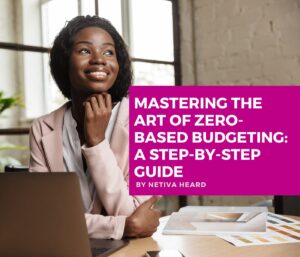Life after a Chapter 7 bankruptcy is not as daunting as many would have you think. In fact, most of the negative information out there is spewed by the credit card companies that lose out when you file for bankruptcy protection.
The truth is, life after bankruptcy (BK) can be a rewarding experience. Think about it, you have been given a fresh start – free from debt – to start over. The most important thing to remember is ‘ Don't screw it up!' Have a strategy in place and commit to it. It will take time but it's not impossible.
In fact, there are several lenders that specialize in post-bankruptcy lending, the interest rates, fees, and terms may not be the greatest, but considering you won't be able to file for bankruptcy again for another 8 years, you're worth the risk in their eyes. Now it is true that a bankruptcy can stay on your credit for 10 years. However, your credit re-building process should begin immediately after discharge. For example, it typically takes 90 days to be discharged from a Chapter 7 BK, you can and should start rebuilding on day 91.
Here are the 10 Steps To Rebuild Your Credit After Bankruptcy:
Step 1: Reflect on how and why you had to file for bankruptcy
Take a moment and reflect on how you got here in the first place – namely why you had to file bankruptcy. Could you have saved more? Spent less? Planned for emergencies better? What did you learn? Self-reflection is key so that you do not end up here again. I do know ‘things happen' such as illnesses, job loss, etc but oftentimes I meet with clients who just really overextended themselves and lived above their means.
Even if it was a tragic event that led to bankruptcy; taking a moment to learn from this experience is very significant. In my personal situation, I knew that I needed to invest in better health insurance, have a larger emergency fund, and rely on cash a heck of a lot more than credit.
Step 2: Create a budget
This is so important! Now, more than ever, you need to get serious about having and sticking to a budget. This is your personal spending plan that tells your money where to go and how to work for you each and every pay period. This means making an effort to live below your means, not at your means. It is also good at preventing frivolous spending and determining ways to keep more money in your pockets/ bank account.
If you have pinpointed your ‘learning lesson' from step one it should be implemented here, in step two. Thus, your budget should include money set aside for your Emergency Fund/Savings Account that is funded prior to paying any other bills. This is the ‘Paying Yourself First' practice.
Being dedicated to paying yourself first and having a fully funded Emergency Fund for emergencies only will ensure that when ‘life happens' you'll be better prepared financially. How much should you set aside? Well, how much can you afford? I typically suggest starting with 10% of your monthly net income or $200, whichever is more feasible and increasing it from there.
Step 3: Pay ALL of your current bills on time
I cannot stress this enough. The worst thing you can do is to file bankruptcy and have a past due utility bill or cell phone collection pop up on your credit report months or even a year afterward! Haven't you learned your lesson?
This is what future creditors and your credit score will say when your report is further damaged by the reporting of negative information; in fact, your score will be penalized twice as bad by the credit reporting scoring system.
If you have done a good job with number two – creating a budget- you should have no problem paying your bills on time – if not early. Probably the easiest way to pay anything on time is to set up automatic payments around your payday. You set it once, and monitor it from there.
Now it's time to build!
Step 4: Check your credit report
You want to ensure your bankruptcy is reporting accurately – courthouse information, amount, the type of bankruptcy filed, etc. And if you find an error, legally you can dispute for a deletion.
You also want to check the other accounts that were discharged in your bankruptcy. They should state they were discharged in Ch7 bankruptcy, the amount should be $0 owed/due, and all collection activities should stop, which includes any updates on your report about the debt. If you see any errors, dispute for deletion.
Step 5: Re-enter the world of Credit
Namely, apply for a credit card. You may be a little apprehensive, but if you plan on purchasing a home, opening a business, and rebuilding a positive credit profile, this is a MUST!
How the credit scoring model works, any positive information that you have posted on your credit report will outweigh the negative information reported in the past. Therefore you have to put some positive information on there to boost your scores and strengthen your credit profile.
Where should you begin? Well, they may start to solicit you first. Review all offers carefully, interest rate, repayment terms, fees – all fees because with one particular card (First Premier) there are several so you want to be prepared. Don't accept just anything! If you have not gotten any offers try your personal bank or your local credit union.
If all else fails seek out popular, secured sub-prime credit card providers: Credit One, Capital One to name a couple. You can try obtaining an unsecured credit card but immediately following a bankruptcy I doubt if you'll be approved. Further, the inquiry and rejection will further damage your report. Make sure you select a secured card that reports to All 3 Credit Bureaus – after all, you are rebuilding right? Reporting to only one or no bureaus at all is not going to help you in any way. You want all of that new positive credit information reporting into your score. I've explained secured credit cards in detail here. If are rejected for a secured credit card, then you can view the link I have posted under the ‘Credit Building' tab for no credit check secured cards that report to all 3 credit bureaus.
Step 6: Use your card wisely
Spend less than 10% of your credit limit, 25% maximum. That means if you have a $300 credit limit, do not spend more than $75; for $500 do not spend more than $125; $1000 credit limit do not spend more than $250; get the picture? Low balances, good payment history, more available credit than utilized (spent) credit is key.
I don't advise keeping a balance because of the high-interest rates, but I have seen that some companies – Capital One in particular – will give you an increase faster by keeping a balance for 1-2 months. If you do this, please pay on time, keep it under 20% of the credit limit, pay it off no later than 3 months, and include it in your monthly budget.
And, don't create an additional bill for yourself. What do I mean by this? The easiest way to factor credit cards into your monthly budget is to set up automatic payments for a utility, cell phone, or some other monthly bill that's already in your written monthly budget; charge it and just pay it off right away the following month.
This way you are not creating an additional bill and the expense is already included in your budget, you've just changed your method of payment from auto-debited withdrawals from your bank account to automatic credit card payments.
Step 7: Increase that limit
Most people start off with a $300-500 credit limit, which doesn't do too much for building your score, so you want to get it to $1000+ as soon as possible. If purchasing a home is on your short term list you want it over $2000. Why is this important? The lower the credit card limit the less it will count towards increasing your score.
If you're with a good secured credit card company, this means increasing the amount of your security deposit. If you're with a less than stellar secured credit card company that still reports to all 3 credit bureaus but doesn't offer incentives such as switching to an unsecured credit product in 6-12 months.
Then you may want to use the less than stellar secured card for 6 months, and then re-apply for another card with a more reputable company. By then you may be eligible for one of Capital One's or Credit One's unsecured products.
Step 8: Get more than one card
Three to four months should suffice. Using the above example, let's say you got a $500 secured card, paid it well for 6 months, and applied for an unsecured card and was approved for $500. DO NOT CANCEL THE SECURED CARD. Increase the deposit to $1000, if you can, but do not increase your spending.
The increase of available credit will eventually factor into your credit score and give you a nice little boost. After all, 30% of your credit is based on your debt utilization and 35% is based on your payment history. By increasing your credit limit, adding on the additional credit card that you will use just as wisely, keeping your balances super low, and paying on time; you are well on your way to good credit again!
With six more months of positive payments on both of your cards, you can ask for a credit limit increase with the unsecured credit card and apply for one more at that time as well. You're 12 months in at this point and should have substantially better credit than when you started this journey.
To experience an even bigger jump, see if you can have a close friend/family member add you on as an authorized user to their credit card account. This account should have stellar payment history and super low balances and be 3 years or older in age. By becoming an authorized user, all of that good payment history will be placed on your credit report boosting your score even more!
Step 9: Mix up that Credit
This basically means adding an installment loan. This is usually feasible at months 6, 9, 12, and/or 18 depending on your situation. This is easier to obtain when you are an active member of a credit union; if you're not, another option would be through a company such as Springleaf or Prosper.
People with federal student loans that they are paying on a regular monthly basis won't have to do this right away, but those that only have the credit cards they've recently acquired on their credit report will. This can be in the form of a personal loan/line of credit or a car loan.
Your interest rate will be less than stellar but make sure the loan is affordable and can be paid off relatively easy. Namely, don't put a strain on your budget. When I got my first personal loan I didn't even spend it. I put it in my checking account with my credit union (who I got the loan through) with a few hundred dollars extra for interest and set up auto-payments for 3 months.
I did this 3 times; paying the loan off in 3-6 months until I saw a nice little jump in my score. I never did get a car note after my BK because living below my means with as little debt as possible was my ‘lesson learned' from the whole experience. If you need a car after a BK, check out this article on Edmond's.
Step 10: Monitor your progress and pinpoint areas of improvement
I personally signed up with a credit monitoring service that monitors all 3 bureaus, however, signing up with a free service, such as CreditKarma.com is fine. It only monitors Transunion and Equifax; the credit scores have been argued to be far from accurate but the data is usually okay – not great, but okay. Your main objective is to see how you're doing; is your score moving up or down? Is your credit utilization rate okay? Could you do more to boost your score and strengthen your overall credit profile?
Monitor your budget on a bi-weekly or monthly basis. Could you be saving more? Are there ways to cut some more spending from your budget? Do you need to find a way to bring in more income to cover your necessities (food, shelter, transportation, etc)? Make changes/improvements based on your assessment.
Following these 10 steps consistently should put you well on your way to an excellent credit score! If you need assistance rebuilding and managing your credit more efficiently; feel free to contact me!
Need help rebuilding your credit after bankruptcy? Come learn all about how to rebuild your credit after filing for bankruptcy, restore your credit score & MORE!!!
For more help on improving your credit after being discharged from bankruptcy click here. If you'd like assistance repairing your credit after bankruptcy, feel free to schedule a consultation to review a copy of your Credit Monitoring Report here; we'd love to help!
Do you have some tips on how you rebuilt your credit after bankruptcy? I'd love to hear about it!
~ Netiva
First published November 20, 2014, Updated April 25, 2022









